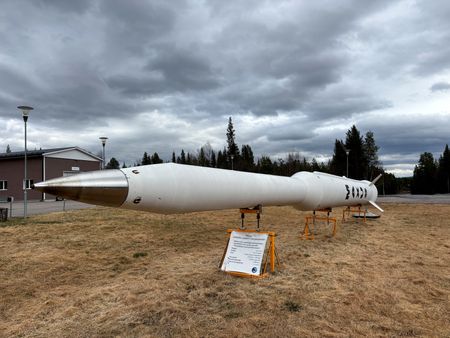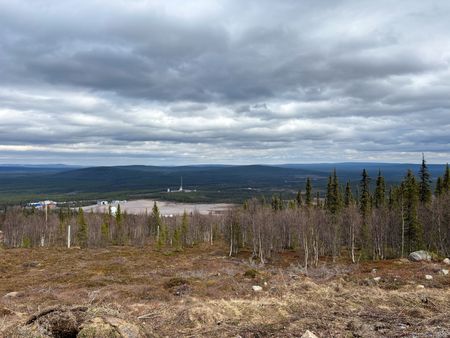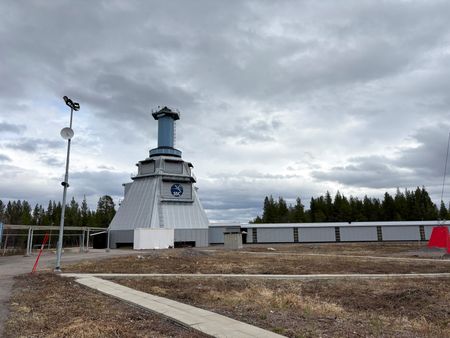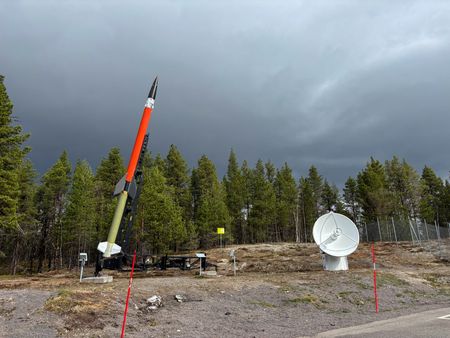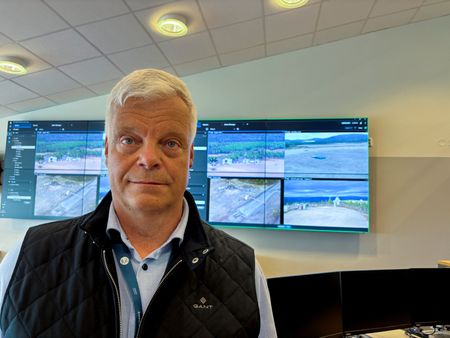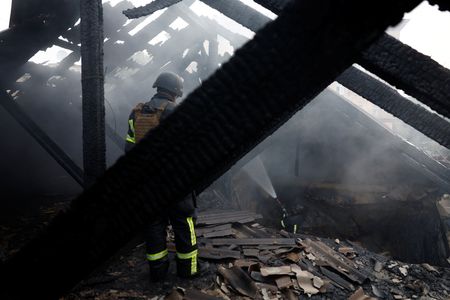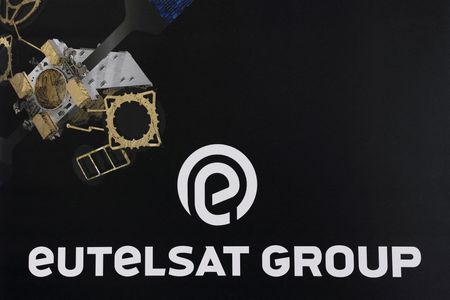By Johan Ahlander
KIRUNA, Sweden (Reuters) -Two small spaceports in the far north of Sweden and Norway are racing to launch the first satellites from mainland Europe into space as the region looks to reduce its reliance on U.S. players.
U.S. President Donald Trump’s “America First” policies and the war in Ukraine have prompted Europe to ramp up its independent capabilities in a variety of areas, including defence and space operations.
Amid fears that Elon Musk – Trump’s one-time ally – could limit Ukraine’s access to SpaceX’s 7,000 Starlink satellites that are vital for the country’s communications, Europe has been rushing to find alternatives.
But there’s a mountain to climb.
In 2024, the U.S. carried out 154 launches of hardware into orbit, while Europe managed just three. Out of $143 billion in global public investment in space ventures last year, Europe accounted for only 10%, an EU study shows.
The trend towards lower Earth orbit satellites – which are cheaper and offer better connections but need to be deployed in larger numbers to maximise coverage – also poses challenges.
A Goldman Sachs report estimates that 70,000 LEO satellites could be launched in the next five years, a tenfold increase.
“We’ve lost (in) competition to, let’s say, Elon Musk … and definitely we need to have our (own) autonomous launching possibilities,” Andrius Kubilius, European Commissioner for Defence and Space, told Reuters.
“That’s why the development of launching possibilities on the European continent, both in Sweden and Norway, is very important.”
Europe’s only spaceport is in French Guiana, South America, some 7,000 kilometres (4,350 miles) from Paris. Europe successfully launched its new Ariane 6 rocket from there earlier this year, more than 10 years after it was commissioned and five years later than originally planned.
While it can carry a bigger payload per rocket than SpaceX’s Falcon 9, Ariane 6 is not reusable and has a higher cost per launch. It is also not nearly enough to meet Europe’s commercial and military needs in coming years.
That’s where the budding Nordic spaceports come in.
RARE ADVANTAGE
Situated 200 kilometres above the Arctic circle, near where the borders of Sweden, Finland, Norway and Russia converge, the Esrange Space Centre is unusual in Europe in offering 5,200 square kilometres (2,008 square miles) of uninhabited land.
Surrounded by boglands, rivers and with the snow-clad peaks of Sweden’s tallest mountain in the distance, Esrange is close to Kiruna, home to one of the world’s largest underground iron ore mines, providing ready access to railroads and an airport.
The area, more than three times the size of London, is shared only by the spaceport and the reindeer herds of Sweden’s indigenous Sami, making it suitable for recovering rocket parts. It has little light pollution and is easy to close to air traffic.
“It is unique, having a large land-based area such as the one we have here,” said Lennart Poromaa, head of the Esrange Space Center, which has about 130 employees.
Esrange, part of the state-owned Swedish Space Corporation, was established in 1964 and launched its first sounding rocket – a research rocket that does not go into orbit – a couple of years later. It was inaugurated as mainland Europe’s first orbital launch site by European Commission President Ursula von der Leyen in 2023.
Preparations for orbital launches are well underway, with a new set of bigger launch pads, hangars and research facilities being readied.
https://www.datawrapper.de/_/GqkUg/?v=2
Together with Andoya Spaceport, an island base in northern Norway, it represents Europe’s best hope of securing independent access to space in the coming years. Andoya is majority-owned by the Norwegian state, with defence firm Kongsberg holding a 10% stake.
In March, Andoya conducted the first test launch of a small rocket made by German startup ISAR Aerospace that can carry a payload of around 1,000 kilograms (2,205 pounds). It flew for 30 seconds before falling into the sea in what was deemed a success.
Daniel Metzler, CEO and co-founder of ISAR, said interest from defence ministries in the last six months had been huge and that ISAR’s flights were being filled for the coming years, even before a first successful orbital launch.
“Frankly, I think probably the biggest driver was Trump getting elected once again. And as such, Trump probably did more for European defence than any European politician before him. It really created a huge sense of urgency,” he said.
ISAR is aiming for the first commercial flights to take place next year.
AGGRESSIVE TIMELINES
Andoya, visited by a NATO delegation this month, has a licence for 30 launches per year. Esrange has not set a fixed target but will also fill an important need for NATO in providing rapid launch capacity.
Unlike Andoya, Esrange has opted for existing hardware, signing contracts with U.S. rocket manufacturer Firefly and South Korea’s Perigee, giving it multiple potential options.
Firefly, which plans to launch from Esrange from 2026, has a rapid response service that aims to be able to send rockets into space at 24 hours’ notice to meet urgent needs, such as replacing a failing satellite.
“I think Europe needs to look at similar or even more aggressive timelines,” a NATO official told Reuters, speaking on condition of anonymity.
All of the rocket suppliers are developing partially reusable rockets, with ISAR’s due to be tested at Esrange.
But there is much work to do across the board.
“You need to get all the technical systems in place and then there will be quite a lot of testing and trialling,” said Esrange’s Poromaa. “Within a year or so, we’ll probably have the entire base ready.”
(Reporting by Johan Ahlander. Editing by Niklas Pollard and Mark Potter)

